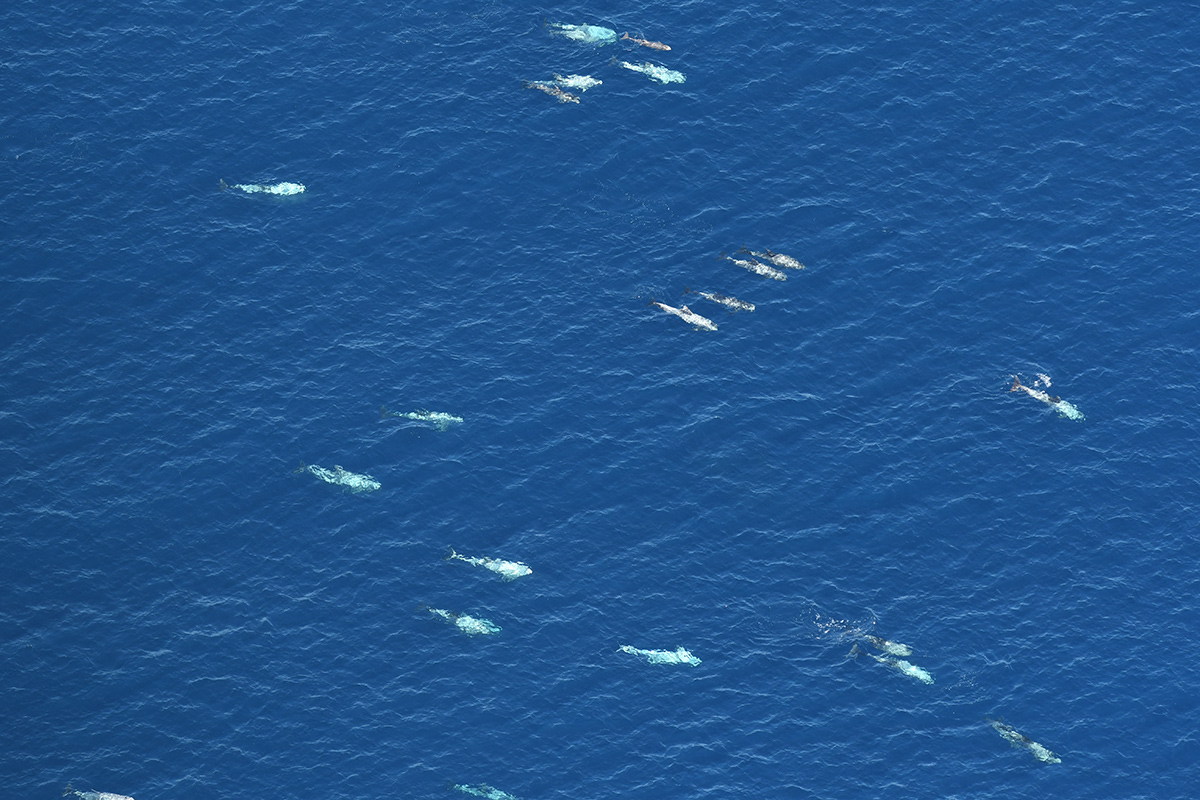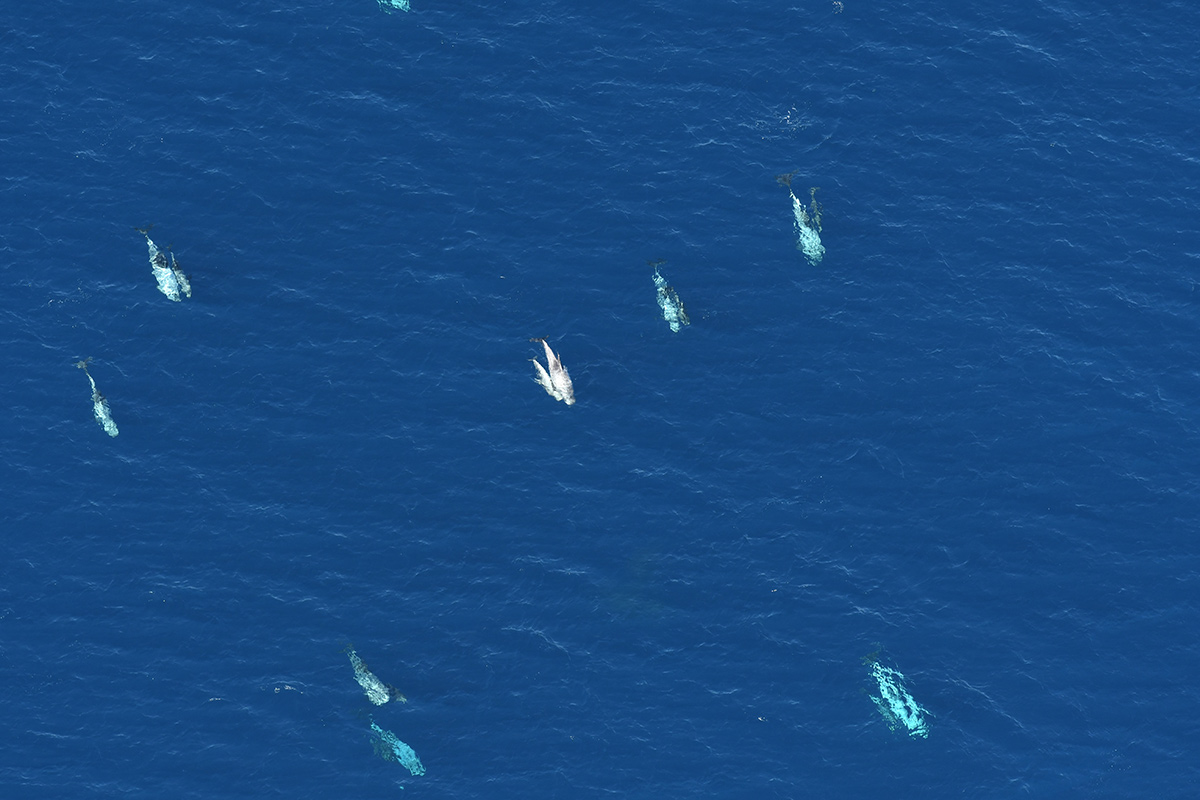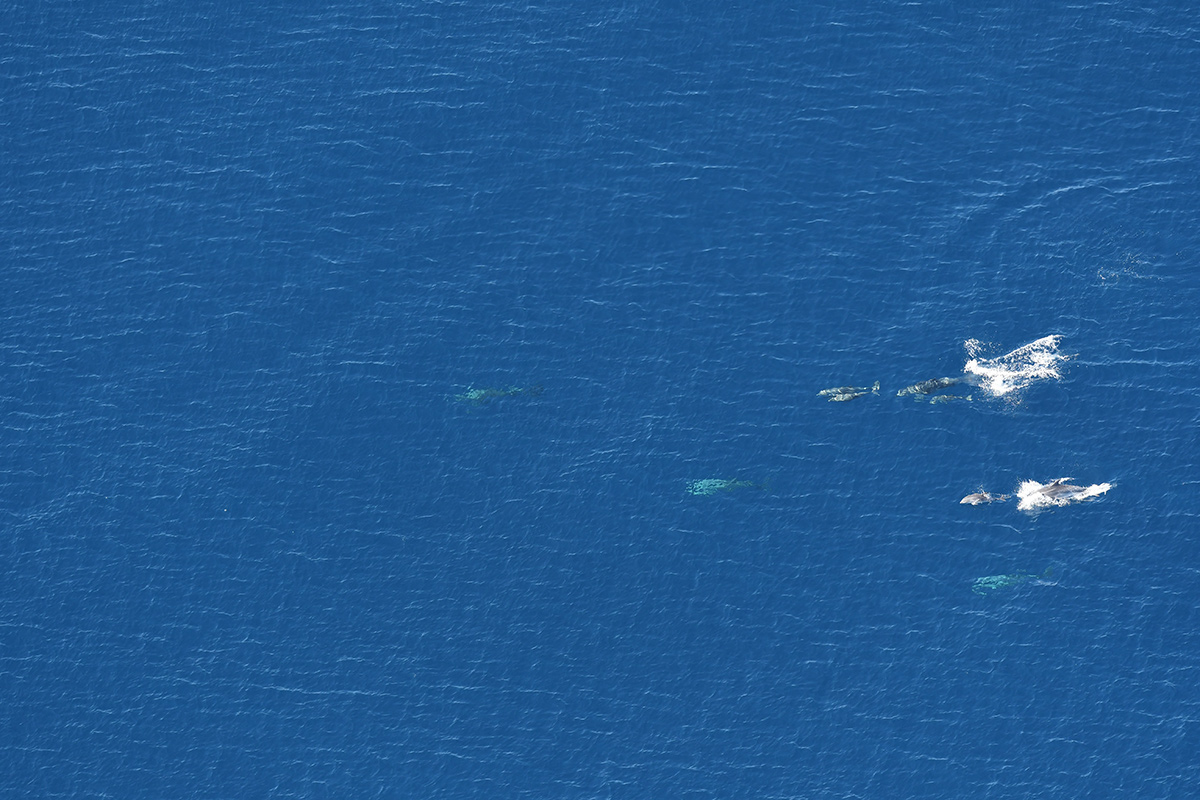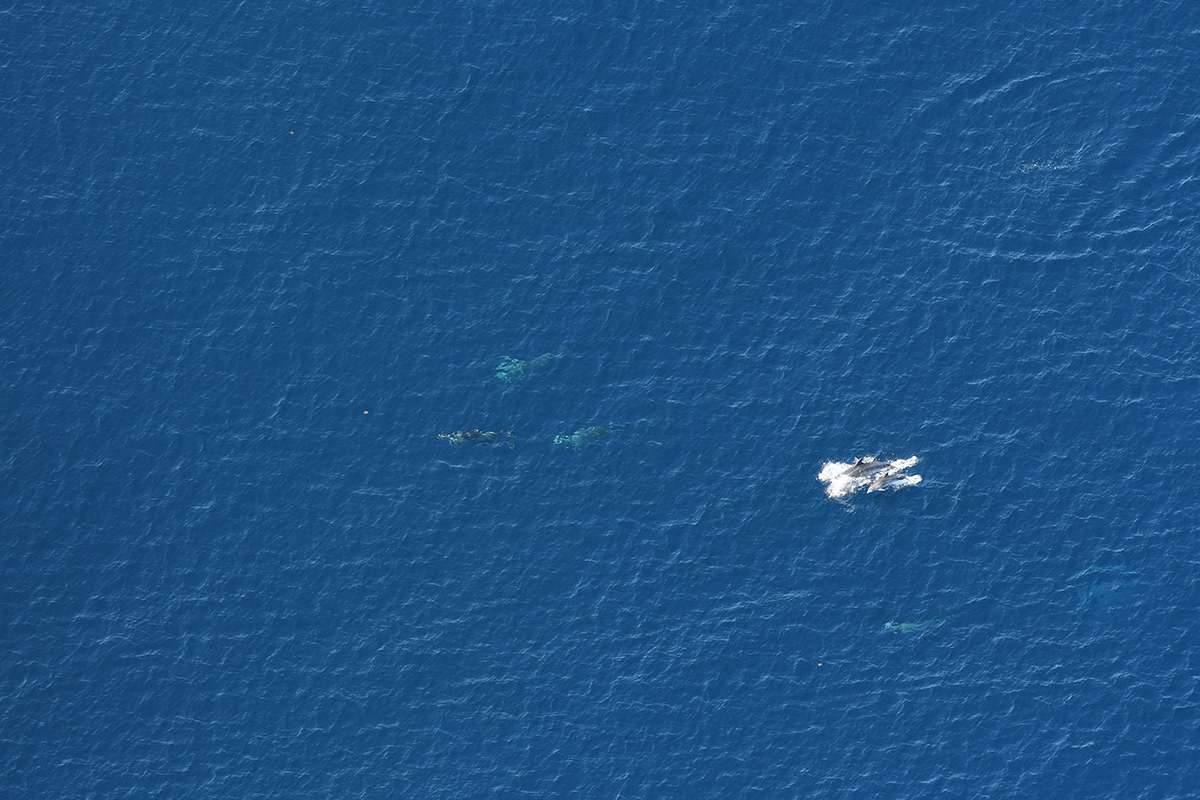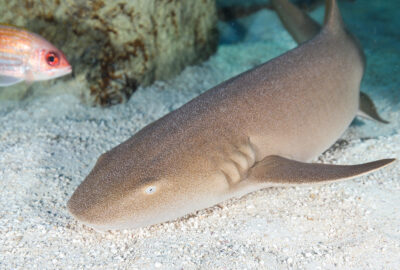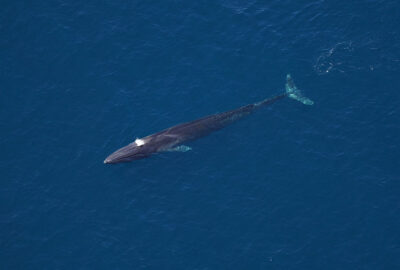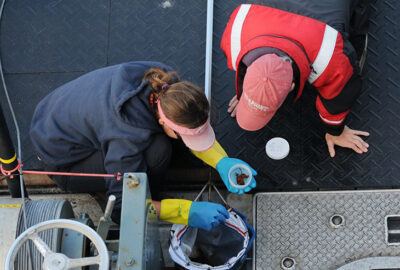High Biodiversity Seen in Monument
High biodiversity and unique sightings during Marine National Monument aerial survey. Researchers see over 950 animals including four whale sharks, a sperm whale, and other endangered and threatened species in the Monument.
By New England Aquarium on Tuesday, August 11, 2020

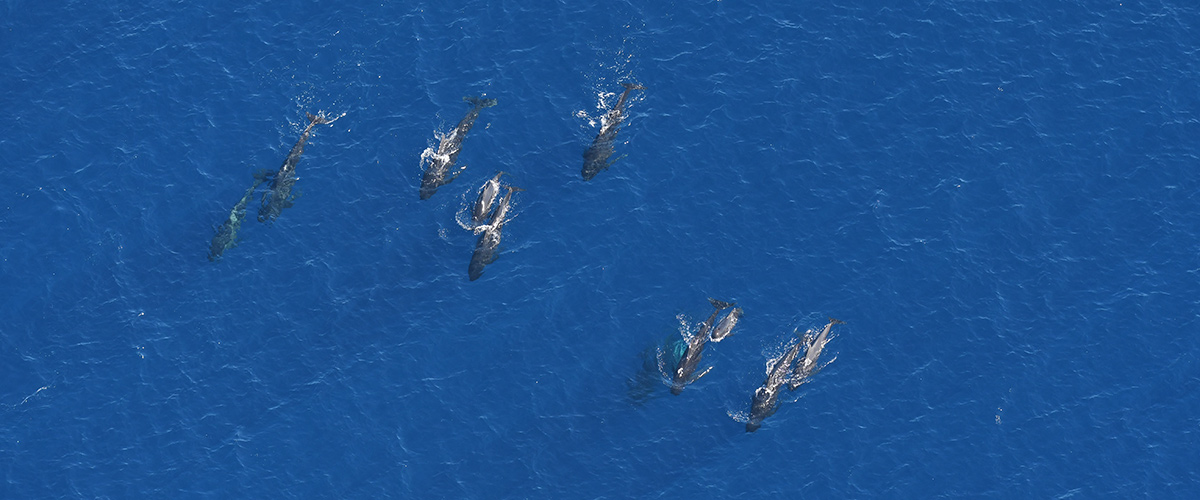
By Katherine McKenna
After a successful trip to the Northeast Canyons and Seamounts Marine National Monument (hereafter, Monument) in February 2020, when two endangered blue whales were sighted, the New England Aquarium’s aerial survey team was eager to get back out there. Planning aerial surveys to the Monument is challenging due to the unpredictable weather conditions offshore. Starting in early March, the team also had to deal with the global COVID-19 pandemic.
Although the Aquarium had to suspend field work for several months, they were able to develop thorough health and safety protocols in accordance with CDC-recommended guidelines that allowed fieldwork at the Anderson Cabot Center for Ocean Life to resume this summer. For aerial surveys, these protocols meant a few new measures to keep observers and pilots safe from COVID-19, such as pre-flight temperature checks, wearing masks, frequent disinfecting, and minimizing shared gear.
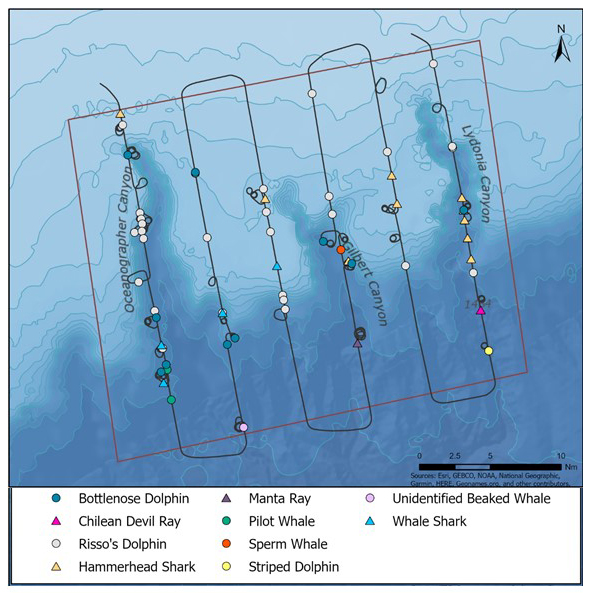
With our new field protocols in place, we were very excited to get up in the air again and return to the Monument. Although wearing a facemask for 5+ hours in a small plane during the summer with no A/C is just as hot (if not hotter) than what you’d expect, as long as we were flying, we didn’t mind!
A nice weather window opened up in early August and after carefully watching the forecast for wind, clouds, and fog, August 2 looked like a favorable survey day. NEAq scientists Orla O’Brien and Katherine McKenna, along with Avwatch pilots Trevor Laue and Jeremy Prignano, arrived at Plymouth Municipal Airport early that morning and the take-off occurred at 8:06 a.m. This flight was just my fifth aerial survey ever and my first time out to the Monument. It was an incredible opportunity and I was very excited to see what we would find!
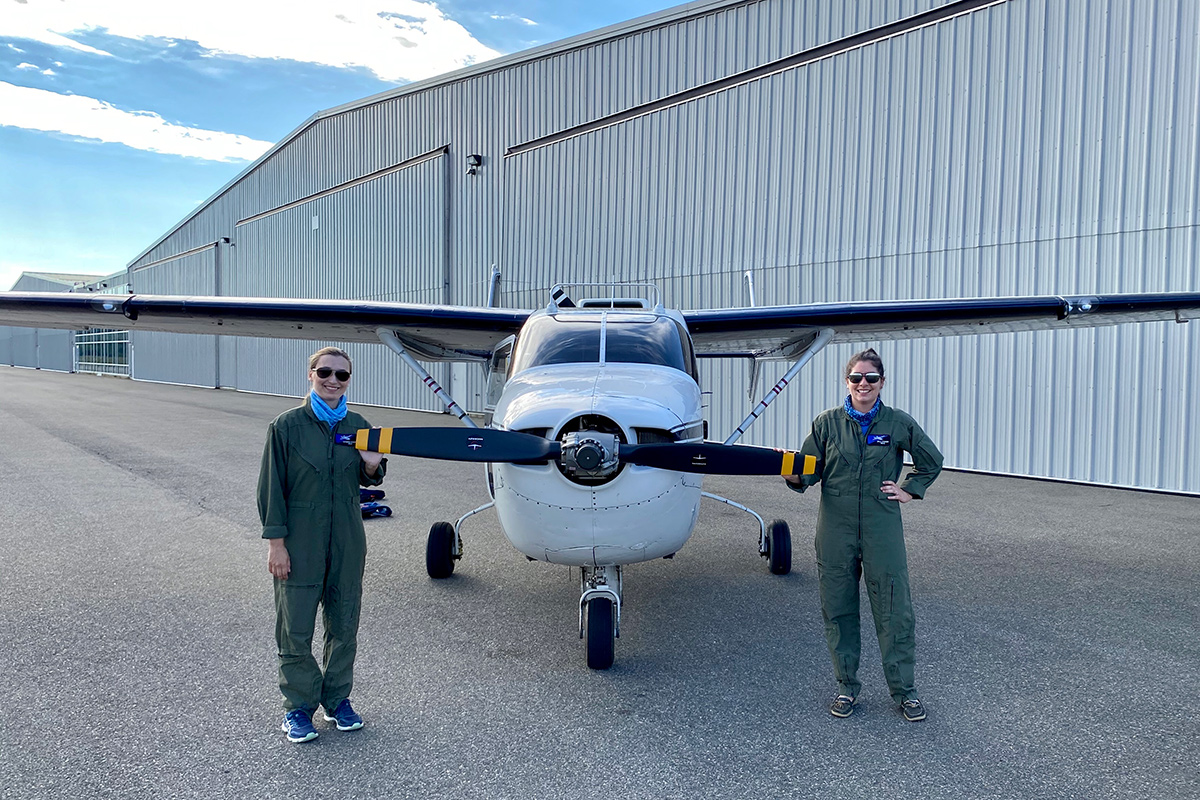
Our 130 mile transit to the Monument took just over one hour and with lots of sun and very few clouds the entire way out, it looked like we were going to have great weather conditions for the survey. As we began our first trackline, we were quickly greeted by pods of Risso’s dolphins (Grampus griseus) and bottlenose dolphins (Tursiops truncatus). Within the first 15 minutes of our survey we had already seen over 200 animals!
/
As we continued on the first trackline, we were surrounded by dolphins on all sides with pods up to 100 animals. As we reached deeper waters, we saw a few groups of pilot whales (Globicephala sp.) as well. We photographed calves traveling with each of these three dolphin species. Dolphin calves stay in close association with their mothers for several years, but seeing calves in the summer time is a special treat because we get to see some very young animals!
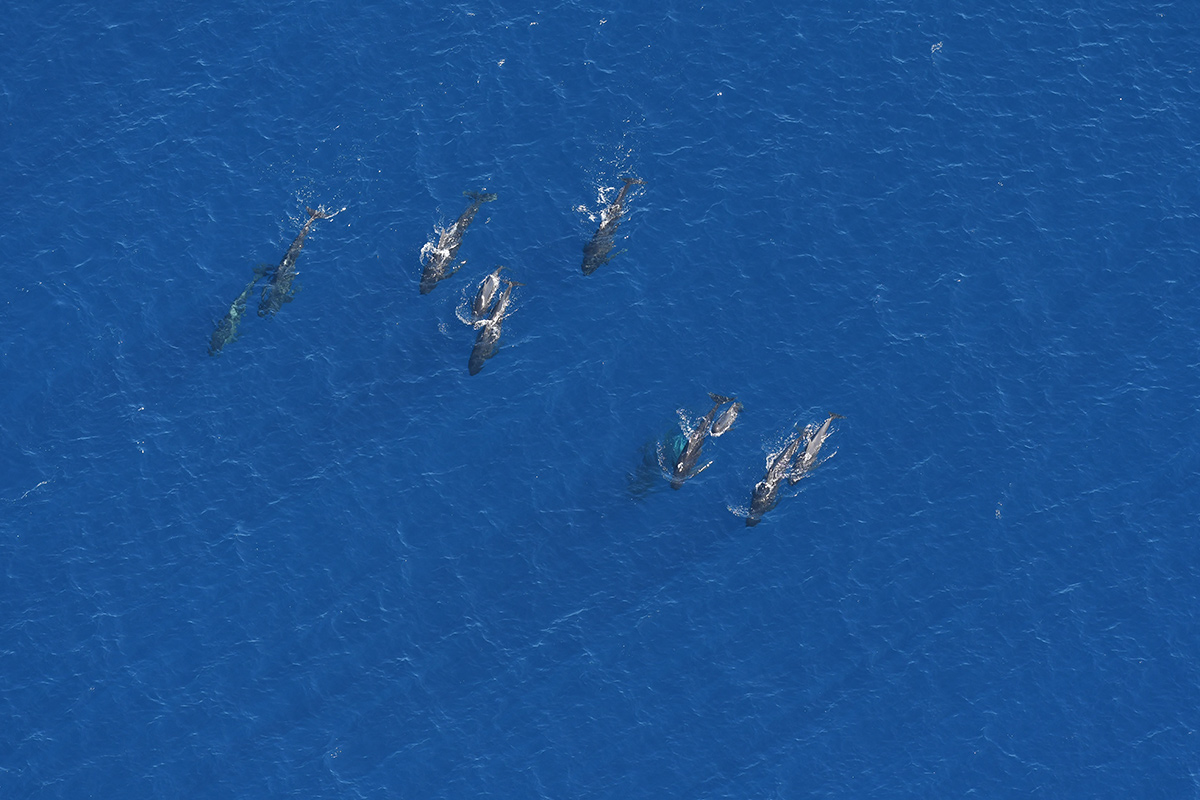
Our next sighting was a first for everyone onboard: a whale shark (Rhincodon typus)! Growing up to 40 feet long, these endangered sharks are the largest shark species in the world and they filter feed on small prey such as plankton. In the three years since NEAq began flying Monument surveys, only one whale shark had been observed during our flights and in this survey we were lucky enough to not only see one, but four!
According to our colleague Dr. Jeff Kneebone from the Fisheries Science and Emerging Technologies (FSET) program, whale sharks can be quite common in the northeast canyons especially in the summer when warm water from the Gulf Stream can get pushed into the shelf break, which leads to highly productive waters. As we crossed whale sharks off our “life-list” and completed our first trackline, we were anxious to see what the next five lines would bring.
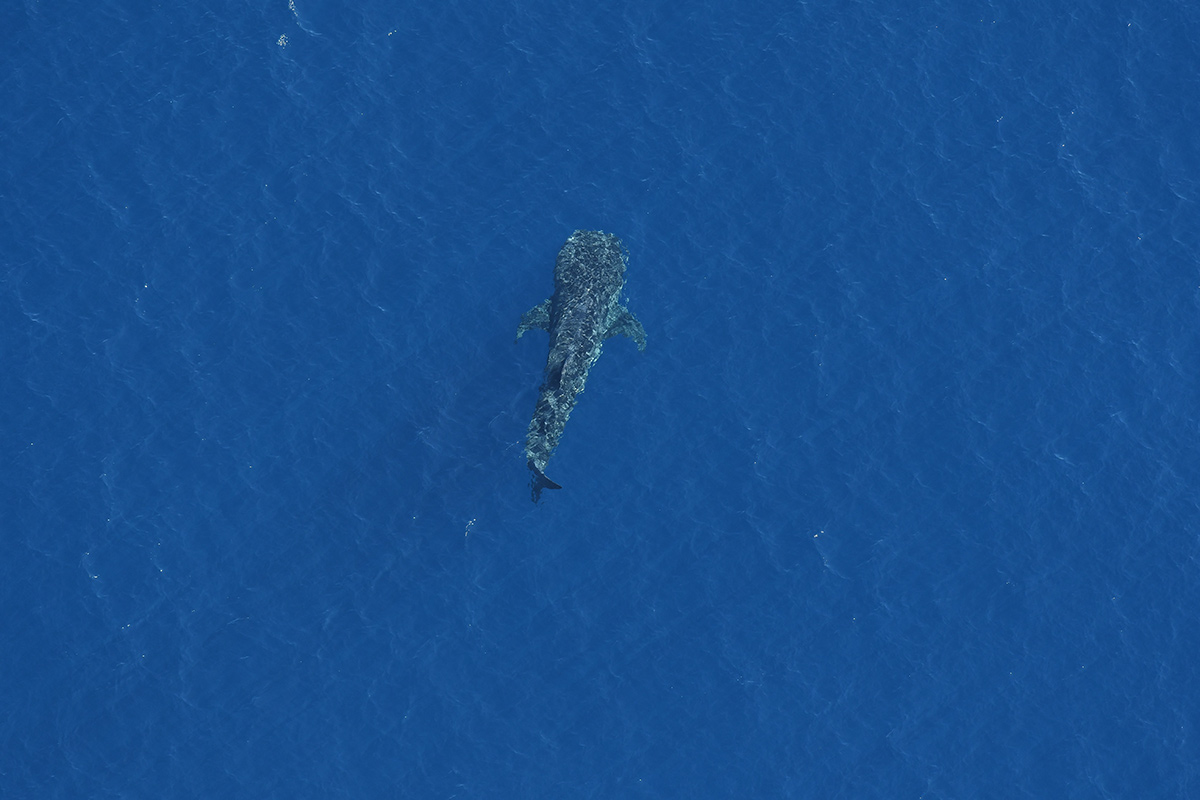
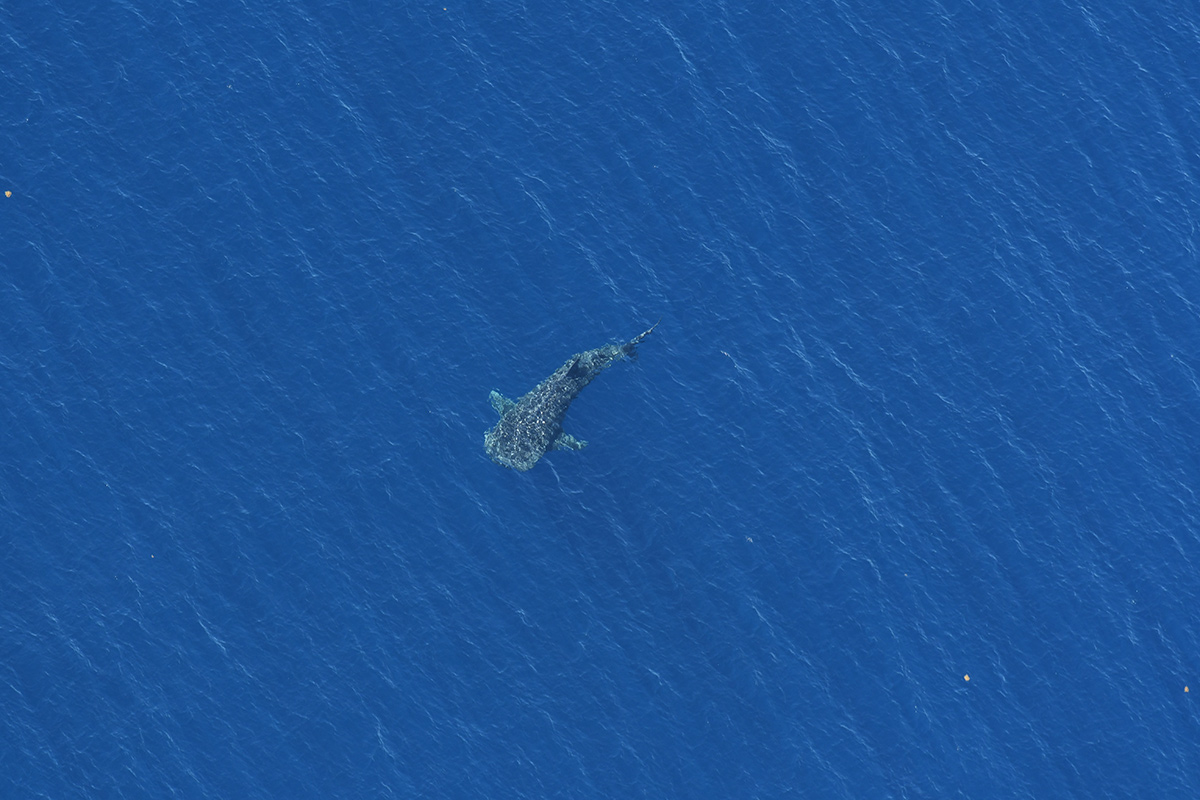
We continued to see dolphins and sharks scattered throughout the tracklines as well as a Manta ray and an unidentified beaked whale before spotting our next highlight of the day: an endangered sperm whale (Physeter macrocephalus), the largest of the toothed whales (odontocetes). Sperm whales can dive for up to 90 minutes and to depths of over 7,000 feet as they chase squid and fish. The deep canyons and slopes of the Monument provide a great feeding habitat for them. This particular whale was seen near the top of Gilbert Canyon, in waters 1,200 feet deep.

Our next unusual sighting was a group of 25 scalloped hammerhead sharks (Sphyrna lewini) that were continuously swimming in a circle, head to tail, at the surface. These migratory sharks typically grow to over 8 feet and their unique hammer-shaped head helps them efficiently hunt prey. It was mesmerizing watching these sharks swim while we did some circling ourselves in the plane to photograph them.
Dr. Nick Whitney, the chair of the FSET program, says that while these aggregations are not uncommon, they are not entirely understood: “Scalloped hammerhead sharks are known to congregate in various parts of the world, and in some cases this is almost certainly related to courtship and mating.”
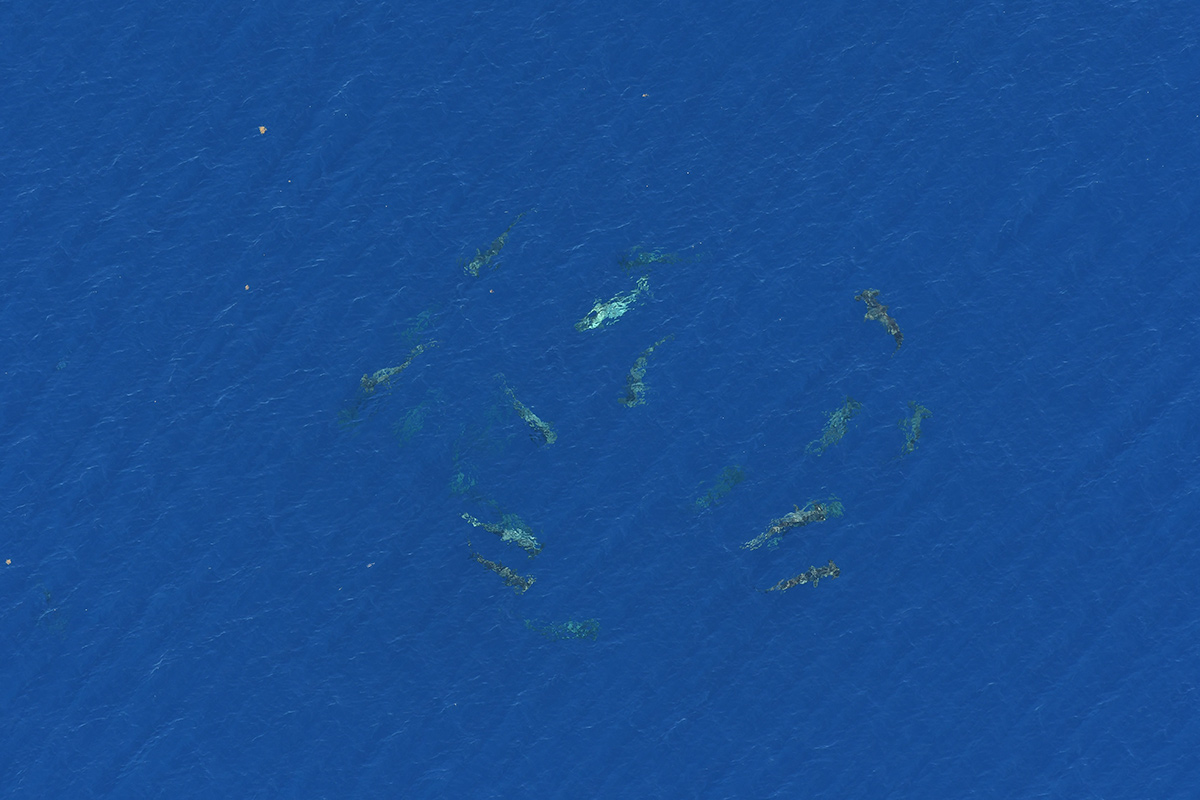
As we started our last trackline, we came across a small pod of 30 striped dolphins (Stenella coeruleoalba) that were travelling quickly at the surface as well as a Chilean devil ray (Mobula tarapacana). We finished up with a few more sightings of Risso’s dolphins and hammerhead sharks to round out another successful Monument flight!

In just three hours we saw 972 animals across 10 different species. This included 589 Risso’s dolphins, 258 bottlenose dolphins, 30 pilot whales, 30 striped dolphins, one sperm whale, one unidentified beaked whale, 56 hammerhead sharks, four whale sharks, one unidentified shark, one Manta ray, and one Chilean devil ray.
We are very fortunate to have many experts in marine research, conservation, and policy here at the Anderson Cabot Center. It is very helpful to be able to reach out to other programs, such as FSET, for insight on various topics. The Anderson Cabot Center’s multi-disciplinary approach uniquely positions the New England Aquarium to be a leader in developing science-based solutions to support marine conservation at local, regional, and global scales.
Brooke Hodge of the Anderson Cabot Center’s EcoMap program (Spatial Ecology, Mapping, and Assessment Program) co-authored a recently published paper (Auster et al. 2020) on the scientific basis for the creation of the Monument. As part of this study, historical marine mammal sightings were reviewed and showed a high number of species and abundance in this area. These findings are due in part to the Monument’s complex topography, oceanographic interactions, and vast array of habitats. “Since the Monument’s designation, it’s been really amazing to see through the NEAq surveys the abundance and life the Monument supports and confirms just how important this area is,” says Hodge.
Our team is grateful to have the opportunity to conduct these aerial surveys because we see something new each time we fly. The novel information gained on each survey highlights the need for continued research to support the protection of the Monument and other highly productive marine areas. We are looking forward to our next flight—there is always so much to see and even more for us to learn about the Monument. Stay tuned for more updates!
This survey was made possible by the support of Natural Resources Defense Council. Previous surveys have been funded by Natural Resources Defense Council, Conservation Law Foundation, and National Ocean Protection Coalition.

